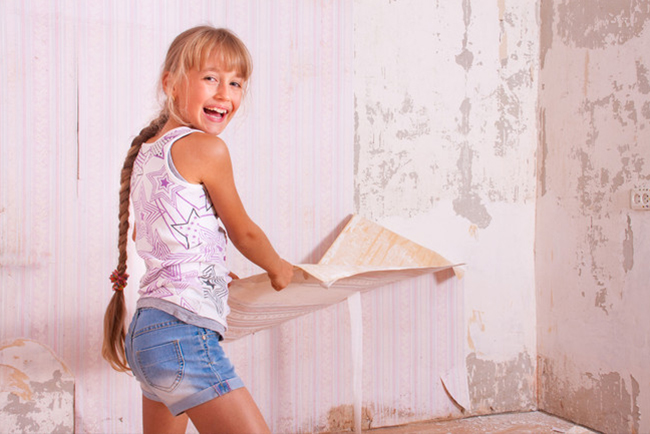Gap fillers that ensure healthy living
Put your trust in solvent-free levelling compounds
When moving house or renovating, you often have to say goodbye to your old wallpaper. The wallpaper is down – and so is the mood. Tenants and building owners often discover not only wallpaper-covered drill holes, but also stress cracks or major plaster damage. And when removing the old floor covering, holes, joints and other unevenness may be found. You have no other choice but to do some patch and repair work. In order to produce smooth surfaces on walls, floors and ceilings, solvent-free levelling compounds are recommended. They are easily recognizable by eco-labels such as the EC1 seal.
If, during construction or renovation, defects or uneven areas appear in the masonry or on the floor, these must be levelled out. You can choose from a range of different fillers and levelling compounds, depending on the area of application and extent of damage. Fillers of stiff consistency, for example, are used for filling holes and cracks. On uneven floors, the product must be flowable so that it can easily spread over the surface area. Another decisive factor is whether the filler is to be used indoors or outdoors.
When repairing gaps, cracks or other defects in outdoor areas or wet rooms, cementitious levelling compounds should be used due to the presence of moisture. In dry indoor areas, by contrast, pH-neutral fillers of high gypsum content are the product of choice. Although they do not tolerate moisture, they are suitable for repairing all kinds of damage. Depending on the application, there are special products, ranging from stucco and joint plasters to adhesive fillers for smooth substrates. True all-rounders are synthetic resin fillers: they are well suited for indoor and outdoor use on all substrates, including wood, metal and even mineral substrates.
Levelling compounds or fillers are applied with a trowel. After thorough drying, the levelled surface is sanded to provide a smooth finish. Levelling compounds usually come as a powder and are mixed with a predefined amount of water, but they are also supplied ready-mixed. To ensure not only a floor that is safe for walking but also a safe room climate, it is advisable to choose products that are free of solvents and other harmful substances.
Helpful indicators when buying levelling compounds are quality labels, for example the EMICODE® seal. For more than 20 years, GEV EMICODE® has been testing and certifying building and installation products for their compliance with predefined emission limits. Levelling compounds that have been granted the EC1 seal ensure unpolluted indoor air and are therefore healthy gap fillers.

Photo: @Sergey Kolesnikov/123rf.com
Wallpaper down – and now? When coming across cracks, holes or other surface defects during construction and renovation, they must be filled and smoothed with a suitable levelling compound. It is highly advisable to choose fillers with quality seals like EMICODE®. They ensure that your home will be free of harmful emissions and that you and your family can enjoy a healthy indoor climate.

Do You Have Questions?
If you have questions about specific topics or if you would like to contact us for any other reason, feel free to contact us by phone, fax or e‑mail.
Phone: +49 211 / 67931–20
Fax: +49 211 / 67931–33
info@emicode.com
Share article on Social Media:
